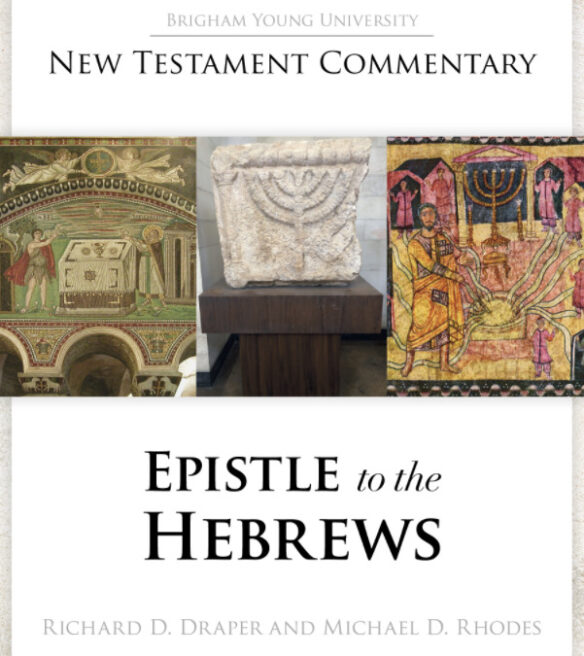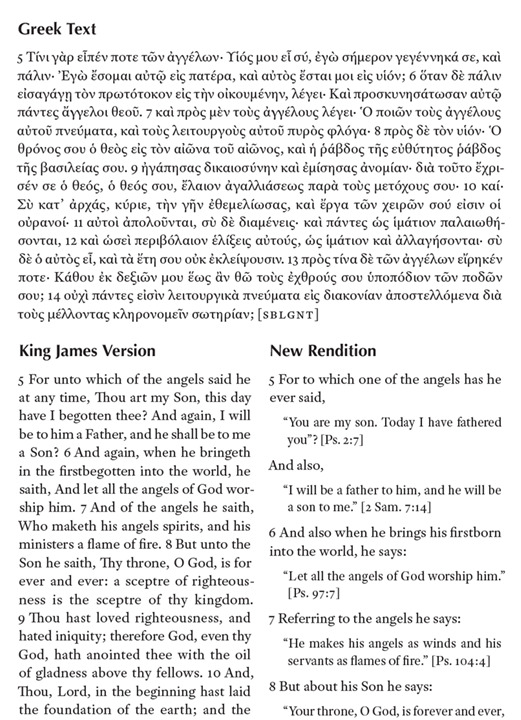
One of the delights of moving to home-focused, Church-supported study is implicit permission to take your own studies far beyond the level that is appropriate for a general audience meeting for less than an hour in Sunday School.
On April 16, BYU Studies will be releasing a much-anticipated commentary on the Epistle to the Hebrews, which was the subject of an entire online conference broadcast on March 6, 2021.[ref]The BYU Hebrews Commentary Conference is available on youtube at https://www.youtube.com/playlist?list=PLXbAVRWvW61YxGGxH2xqj1MulRbjefwqs.[/ref]
When I was provided an advance copy for review, I didn’t understand why a commentary on 13 chapters in the New Testament could justify a book that runs nearly 900 pages. But gamely I dove in.
The Gem Painted in Pauline Authorship
The Epistle to the Hebrews is commonly attributed to Paul. But the early fathers noted that the Greek of this epistle is more elegant and refined than Paul’s rather blunt language. It is as if one were to read something written by Neal A. Maxwell and be told it was the work of Bruce R. McConkie.
This beautiful and powerful early epistle clearly could not be entirely attributed to Paul. At best, it was an epistle that someone with a better command of Greek could have written based on the teachings of Paul, himself.
For hundreds of years, Christian leaders struggled to find a way to canonize this precious document. There were those who argued it had to be Paul, despite the wholly different nature of Greek usage. Eventually those who didn’t agree the author was Paul felt it was more worthy to include the Epistle to the Hebrews than to allow this gem to be excluded because its unknown author could not be known to be an apostle.
[The unknown author of the Epistle to the Hebrews refers to himself as a man, so no spinning feminist theories about this one.]
Why read (buy, study, delight in) this Commentary?
The Epistle to the Hebrews was written to children of converts, pleading for them to remain true to Christ. All of us who have embraced the baptism of Christ benefit from the author’s plea to reject today’s faithless ones, embrace Christ, and unite with the faithful from the beginning of time.
Structure of this Commentary
The introduction to this commentary spans 72 pages, bringing an intelligent but casual student of scripture up to speed on the wealth of information about this Epistle’s worldview, conceptual background, view of Christ, and importance. There have been many fine commentaries written about the Epistle to the Hebrews over the years, but this is the first extensive commentary written in light of the restoration of the Gospel.
The next several hundred pages of the book proceed along the following pattern.
- Introduction to the Corresponding Chapter in the Epistle to the Hebrews
- Grouping of Verses
- Greek
- KJV
- New Rendition
- Translation Notes and Comments
- Analysis and Summary
- Digressions as appropriate (e.g., “Excursus on Melchizedek” in the treatment of Hebrews 7)
For comparison, I reviewed the Church New Testament Teacher’s Manual regarding Hebrews, from which many of us have been taught over the years. Between the two chapters discussing Hebrews, the manual asserts Paul as the author of Hebrews 51 separate times, astonishing as (per the BYU Studies commentary) General Authorities of the Church use careful language to avoid explicitly attributing authorship to Paul. The manual gives instructions, such as “draw a simple figure of a runner on the board” or “Write these mathematical symbols on the board: < > =. Ask students to identify the meaning of each symbol”.
The level of instruction in the New Testament Teacher’s Manual is appropriate for certain audiences.
By comparison, this Commentary on the Epistle to the Hebrews is appropriate for a much more sophisticated audience. An example comes from analysis of Hebrews 1:5–14 (pp. 95-96):

This level of detail, citing source texts used within Hebrews, is exhilarating. And this is not an insight you can get from the current footnotes in the Church’s KJV scriptures.
While treatments such as this are no doubt present in other commentaries on the Epistle to the Hebrews, no other commentary would have interleaved these precious doctrines regarding Christ with complementary sermons from the Book of Mormon, as we find in the Excursus on the Condescension of Jesus (pp. 171-178).
Summary
I’ve only had a few hours to skim the beauty of this volume. I look forward to many months and years of study in the future to absorb the full power of this work. And I know what I’m giving my husband for Easter/Father’s Day…[ref]The BYU Studies Commentary on the Epistle to the Hebrews is available to read or purchase at byustudies.byu.edu.[/ref]

